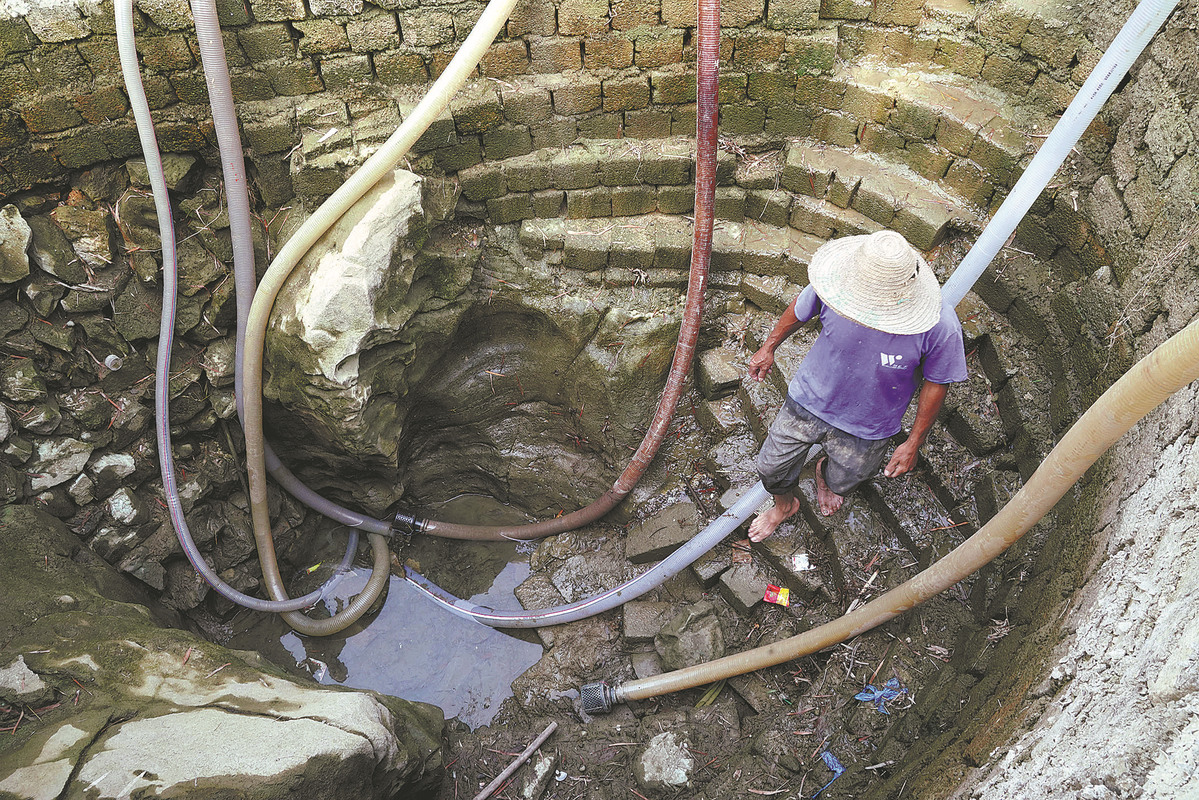Guangxi acts as drought saps region
Adequate measures put in place as crisis affects residents of 52 counties


Many areas in the Guangxi Zhuang autonomous region have taken measures, including upgrading drilling and irrigation facilities and increasing investment, to tackle a lingering drought that has severely affected rural communities, according to the Ministry of Water Resources.
Since November last year, the region has recorded an average rainfall of 110 millimeters — about 70 percent lower than the average level in previous years and the lowest since 1961, data from the regional meteorological bureau showed.
As of Monday morning, more than 405,000 residents across 52 counties in Guangxi had been affected, mostly in 11 cities including Nanning, Chongzuo, Guigang and Hechi, according to the regional emergency management bureau.
The drought has affected 51,300 hectares of crops and caused direct economic losses of 210 million yuan ($29 million), the bureau said.
Despite expected rainfall, the drought is likely to persist in some areas. The regional meteorological authority said three rounds of rainfall and strong convective weather are forecast to hit the region in late April, but the distribution is expected to be uneven, with some areas continuing to experience drought conditions.
In response, the regional water resources department activated a Level III emergency response — the second-lowest on a four-tier scale — on Saturday. The regional finance authority also allocated 17.5 million yuan ($2.4 million) to support relief efforts in 36 counties and districts.
On Monday, the Ministry of Water Resources launched a Level IV emergency response and dispatched experts to the affected areas in Guangxi and Shaanxi province to assist local efforts.
Authorities in Guangxi made early arrangements to ensure water supplies for drinking and spring farming and allocated drought relief funds. With these efforts, water needs for rural residents and agricultural irrigation have been basically secured, the ministry said.
Guigang, one of the hardest-hit cities, has taken multiple measures to support farmers by increasing funding and accelerating the deployment of drilling and irrigation equipment.
"The 30 hectares of sugarcane I planted have been severely affected by the drought," said Tan Honggui, a farmer in Wulong village.
"To reduce losses, the village helped me drill wells next to the fields. Three of them are operating and providing irrigation water, so there's still hope for this year's harvest."
Wei Ganfei, another farmer in Baigan village in Hechi, also expressed optimism.
"Since March, I have drilled a deep well in my sugarcane field that can output 150 cubic meters per hour," he said.
Thanks to subsidy policies, Wei has implemented water-fertilizer integrated drip irrigation on part of his sugarcane field and remote-controlled spray irrigation on another part.
"I believe our efforts in advancing agricultural water infrastructure will pay off in the long run," he said.
Chongzuo, known as China's "Sugar Capital", has also rolled out a number of drought relief measures. In Ningming county, a government-enterprise partnership was established to help farmers modify water trucks. In Jiangzhou district, authorities organized training sessions and coordinated water resources and subsidies for well drilling and water transportation.
Contact the writers at guoyanqi@chinadaily.com.cn
- Defense spokesman: PLA drills around Taiwan justified
- Chinese fantasy animation hits Vietnamese theaters amid holiday surge
- BBC documentary reveals Guangdong's wild side
- Hangzhou 'Bunny Officer' goes viral for gentle traffic management
- From lab to life: humanoid robots' 'coming-of-age' year
- Video of PLA's drills around Taiwan Island released





































